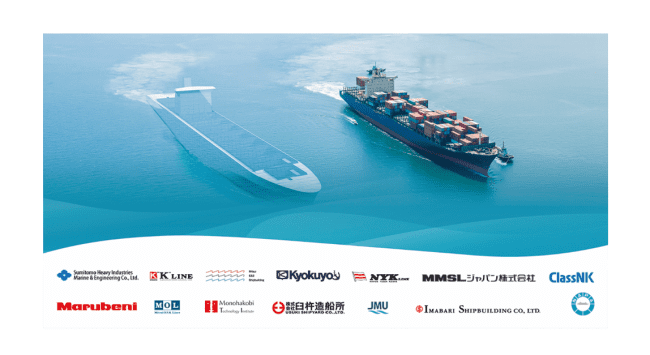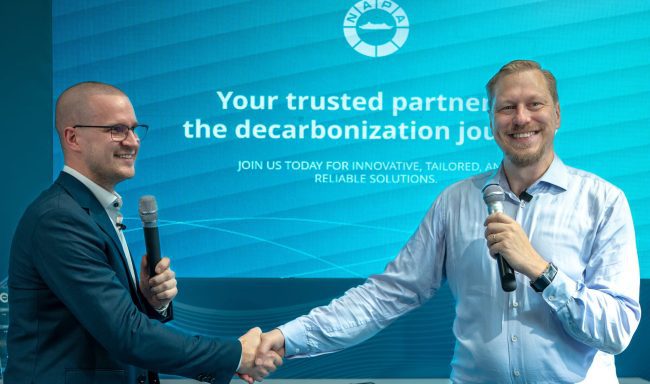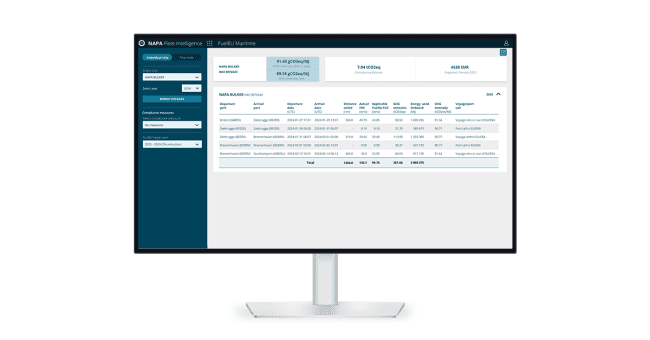Norsepower and Bore successfully test wind power technology for ships
Helsinki, Finland – June 1, 2015
Norsepower’s Rotor Sail technology confirms fuel-saving potential in two independent trials by NAPA and VTT Technical Research Centre of Finland


Norsepower Oy Ltd. and Bore Ltd today announced the successful sea trial of Norsepower’s Rotor Sail Solution, a new wind propulsion technology for ships. The sea trials, verified by NAPA and supported by VTT Technical Research Centre of Finland, confirm fuel savings of 2.6% using a single small Rotor Sail on a route in the North Sea. With these fuel savings, the technology has a payback period of 4 years. Based on the trials, Norsepower and Bore believe that a full system on Estraden with two rotors has the potential to deliver 5% efficiency savings on an ongoing basis. Norsepower forecasts savings of 20% for vessels with multiple, large rotors traveling in favorable wind routes.
The Norsepower Rotor Sail Solution was installed on the 9,700 DWT Ro-Ro carrier MS Estraden. Owned by Bore, the leading Finnish Ro-Ro Shipping Company, MS Estraden operates in a continuous service between the Netherlands and the UK, sailing through the North Sea’s windy corridors at speeds of 16 knots.
“The successful trials of our wind technology are a ground-breaking moment not only for Norsepower, and also the wider development of wind propulsion technology for shipping. The results suggest that when Norsepower’s technology is implemented at scale, it can produce up to 20% net savings in fuel costs with a payback period of less than four years at current fuel prices, confirming that wind technologies are commercially-viable solutions that reduce fuel and carbon emissions in the industry,” said Tuomas Riski, CEO, Norsepower.
The trials were measured and analyzed with continuous monitoring systems from maritime data analysis, software and services provider, NAPA and VTT Technical Research Centre of Finland. VTT Technical Research Centre of Finland collected data over a six-month period, during which both the Rotor Sail technology and automation system was operational 99% of the time. The results confirmed that Norsepower’s rotor is able to produce large amounts of thrust force, which enables considerable fuel savings.
Reinforcing VTT’s findings, NAPA conducted a randomized trial that found clear and significant savings, despite largely calm weather conditions throughout the study. After establishing a baseline profile of the vessel in normal operation, the Rotor Sail was activated and de-activated at random intervals to verify that any measured effect was solely due to the sail, and that any benefit was measurable across the vessel’s operating profile. The average verified fuel savings during the trial in NAPA’s analysis was 2.6%. The trial was conducted using ClassNK-NAPA GREEN, the vessel performance monitoring and verification software developed by NAPA and ClassNK, the world’s leading class society.
“As impartial data analysis and verification is vital for charterers and shipowners looking to retrofit efficiency technology onto vessels, we used both randomized trialing and advanced statistical modeling to ensure objective results. The Rotor Sail offered clear savings against this criteria and adds to a growing list of innovative eco-efficiency technologies that have proved themselves through robust data collection and advanced analytics,” said Esa Henttinen, Executive Vice President, NAPA.
“We are proud to be the first shipowner to install the Norsepower Rotor Sail, and demonstrate that wind propulsion technology has verifiable 5% fuel savings on a yearly basis, can be retrofitted without any off-hire costs, and is extremely easy to use in practice. It’s our goal to find ways to establish sustainable shipping with minimal impact on our environment,” said Jörgen Mansnerus, Vice President, Bore.
The Norsepower Rotor Sail Solution is a modernized version of the Flettner rotor – a spinning cylinder that uses the Magnus effect to harness wind power to propel a ship. When the wind conditions are favorable, Norsepower Rotor Sails allow the main engines to be throttled back, saving fuel and reducing emissions while providing the power needed to maintain speed and voyage time. Rotor sails can be used with new vessels or can be retrofitted on existing ships without off-hire costs. The installation was completed in two parts: the required foundations were installed during a normal dry-dock stay, followed by the 18-metre-high rotor during an ordinary seven-hour harbor stay.
Norsepower is one of several technology companies participating in a joint program of Carbon War Room and UCL Energy Institute to fast-track adoption of emerging wind-propulsion technologies by the shipping industry.
“Modern wind systems are demonstrating measurable and meaningful fuel savings for ships. As wind propulsion, air bubble systems and other ground-breaking technologies are increasingly adopted and become mainstream, the industry will reap the rewards of lower fuel costs—more sustainable than those from short-term price decreases, and be able to stay ahead of external pressures,” says Jose Maria Figueres, Chairman, Carbon War Room.
NAPA Performance Validation
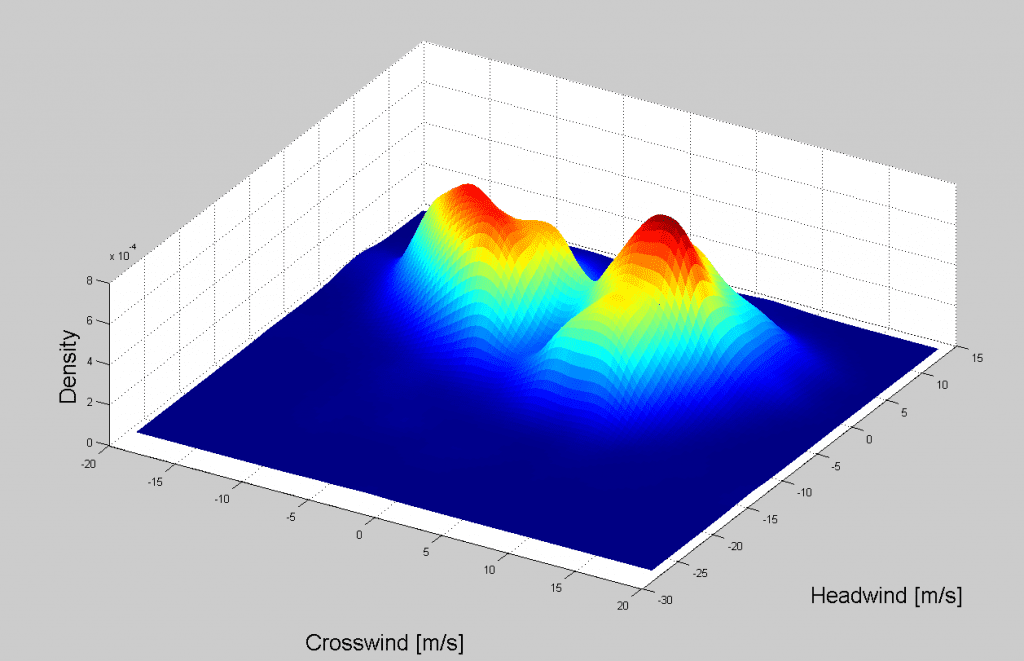
Effective wind distribution during the trial
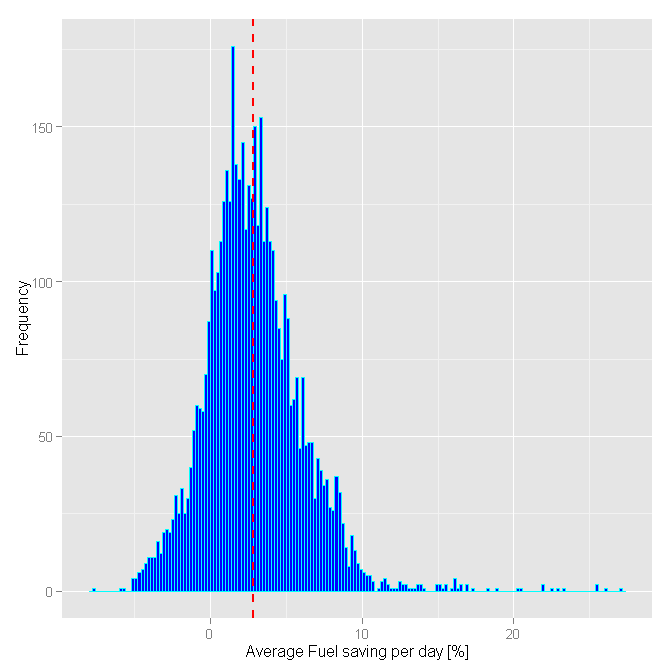
Fuel savings effect distribution
NAPA solutions for validating impact of energy saving equipment or practices are NAPA Fleet Intelligence and ClassNK-NAPA GREEN. You can read more on the product pages, or by booking a demo session with NAPA experts.
